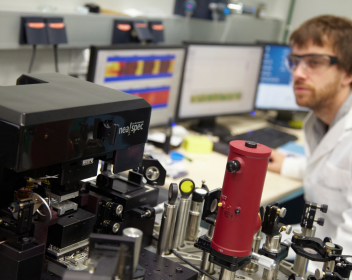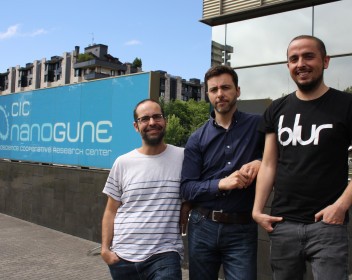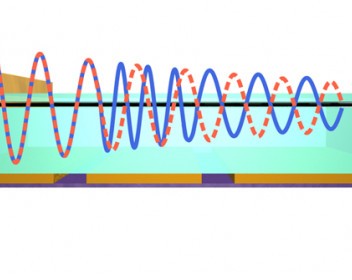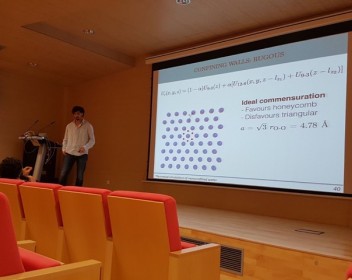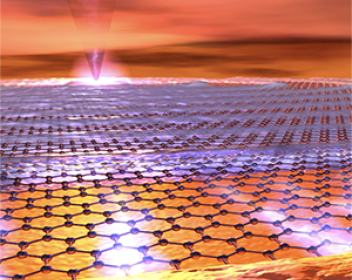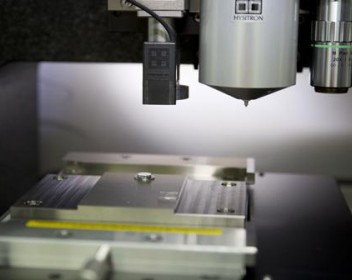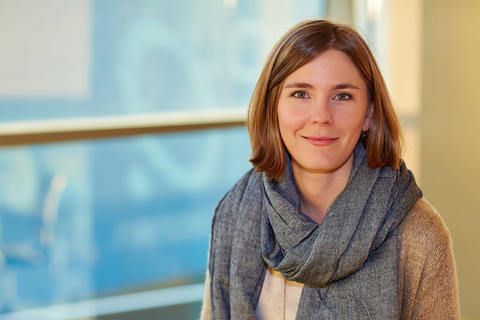Prentsa-bulegoa
Albisteak
Infrared nanospectroscopy and hyperspectral nanoimaging of organic matter
Iban Amenabar, Pre-doctoral Researcher at the Nanooptics Group at CIC nanoGUNE, received his PhD at the University of the Basque Country (UPV/EHU) after the defense of his thesis project on 12 July 2017. His research work, entitled “ Infrared nanospectroscopy and hyperspectral nanoimaging of organic matter", has been developed under the supervision of Dr. Rainer Hillenbrand, Nanootpics group leader.
Duela 100-350 milioi urteko animalien tamaina deduzitu dute, haien proteinak berpiztuz
CIC nanoGUNEko ikertzaile batzuek egindako ikerketa bat argitaratu du Nature Structural & Molecular Biology aldizkari entzutetsuak. Besteak beste, ugaztunen eta tetrapodo guztien arbaso komunaren titina-zatiak berreraiki dituzte esperimentalki, eta haien propietate mekanokimikoak neurtu ahal izan dituzte. Korrelazioa aurkitu dute nanoeskalan neurtutako proteinaren propietateen eta animalien tamainaren artean.
Etorkizuneko materialak 'topologikoak' izango dira
Wolframio eta teluriozko geruza oso fin bat fisikariek 'isolatzaile topologiko' izenarekin ezagutzen duten material mota bitxia dela ikusi dute. Nature Physics aldizkariak argitaratu ditu CIC nanoGUNE partaide izan duen ikerketaren emaitzak. Bi dimentsioko material honek etorkizun handia izan dezake espintronikaren alor sortuberrian bere propietate fisikoei esker.
Ultra-compact phase modulators based on graphene plasmons
Ekonomia Bultzatzeko Zinegotzigoak eta CIC nanoGUNEk hitzarmena sinatu dute oinarri teknologikoko enpresak eta ekintzaileak bultzatzeko
Bi erakundeek konpromisoa hartu dute tokiko enpresei nanoGUNEk sortutako ezagutza helarazteko nahiz, programa espezifikoaren bitartez, ekimen ekintzaileak babesteko nanoteknologiaren arloan. Hitzarmenaren bidez, nanoGUNE Connecting Talent estrategiaren esparruan lan egingo duten erakundeen sarera sartuko da. Estrategia horrek ibilbideak sortzen ditu gazte kualifikatuentzat lan-aukerak garatzeko, tokiko talentuarentzat lehen lan-aukerak sortuaz, edota ikerketa-alor horretan prestakuntza altua duten eta atzerrian lanean ari diren donostiarrak erakarriaz. Horrez gain, nanoGUNEk bat egin du Bono Teknologikoen programarekin, eta programa horren bitartez enpresek eta ekintzaileek ikerketa-zentro horretan garatutako ezagutzaren transferentzia teknologikoa eskura dezakete.
Theoretical Simulations of Nanoconfined Water
Jon Zubeltzu, Pre-doctoral Researcher at the Theory Group at CIC nanoGUNE, received his PhD at the University of the Basque Country (UPV/EHU) after the defense of his thesis project on 5 June 2017. His research work, entitled “Theoretical Simulations of Nanoconfined Water", has been developed under the supervision of Prof. Emilio Artacho, Theory group leader.
Quantum nanoscope
Dimentsio nanometrikoko lehenengo aleazio superelastikoa
Electronic and spintronic devices using two-dimensional materials
Mário Ribeiro, Pre-doctoral Researcher at the Nanodevices Group at CIC nanoGUNE, received his PhD at the University of the Basque Country (UPV/EHU) after the defense of his thesis project on 30 May 2017. His research work, entitled “Electronic and spintronic devices using two-dimensional materials", has been developed under the supervision of Dr. Luis Hueso (Nanodevices group leader) and Dr. Felix Casanova (Nanodevices group coleader).
Molecular spintronics in Nature Materials
Materials for second-generation information and communication technology applications should be as small and as fast as possible. It is precisely these kind of materials that Ikerbasque Prof. Luis Hueso, head of the Nanodevices Group at nanoGUNE is seeking for, together with his colleagues Mirko Cinchetti (TU Dortmund) and Alek Dediu (Istituto per lo Studio dei Materiali Nanostrutturati in Bologna). In a progress article published in Nature Materials, the three experts in molecular spintronics give an overview of the developments in this relatively new research field.
Agenda
| Al | As | Az | Og | Or | Lr | Ig |
|---|---|---|---|---|---|---|
|
1
|
2
|
3
|
4
|
5
|
6
|
7
|
|
|
|
|
|
|
|
|
|
8
|
10
|
11
|
12
|
13
|
14
|
|
|
|
|
|
|
|
|
|
|
15
|
16
|
17
|
18
|
19
|
20
|
21
|
|
|
|
|
|
|
|
|
|
22
|
23
|
24
|
25
|
26
|
27
|
28
|
|
|
|
|
|
|
|
|
|
29
|
30
|
31
|
1
|
2
|
3
|
4
|
|
|
|
|
|
|
|
|
Ekitaldiak
- 2026/02/04 - 2026/02/06
nanoGUNE Winter School 2026
nanoTEKA
Aurkitu argazkiak, irudi esperimentalak, bideoak, audioak eta nanoGUNErenirudi korporatiboa.

